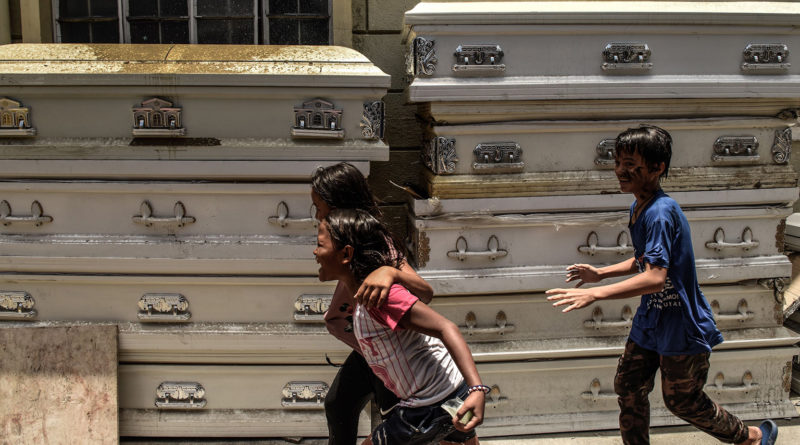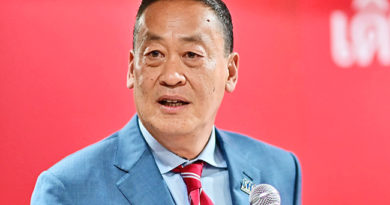COVID-19 SPECIAL- Covid-19 battle: How have South-east Asian nations fared?
The outlook for each is dependent on key factors such as prior experience, effective bureaucratic capabilities and social capital
.

It is rare that countries around the world are confronted with the same challenges at the same time, but this is the case with Covid-19. This presents a rare opportunity to observe, measure and compare the responses that countries have rolled out to deal with the crisis.
While the coronavirus crisis in each country differs to some extent, most of these differences are internally created and not because the disease has behaved differently. Only age and medical condition seem to make a difference to the disease’s outcome, and so the demography and general health status of each country do play a role. However, these are known and can be accounted for easily.
Looking at the responses of countries in South-east Asia, we can identify several important factors that have played a key role in the speed and effectiveness of their responses. These are prior experience, effective bureaucratic capabilities, and social capital.
ONCE BITTEN
Prior experience with pandemics or other public health crises has been a clear advantage. Outside of South-east Asia, this has made a difference in China, Hong Kong, Taiwan and South Korea. In South-east Asia, that experience was an advantage in the initial responses of Vietnam and Singapore.
Vietnam’s rapid containment lasted through three waves and has brought a halt to local transmissions for now. Singapore too reacted rapidly, but it has since been hit by second and third waves of larger infections that it is still battling to contain.
Although not widely known, Vietnam’s Ministry of Health was led for two terms by an eminent epidemiologist, Dr Nguyen Thi Kim Tien, who had taken lessons from the country’s bitter experience with Sars. Part of her legacy is a robust network of disease control centres around the country that provides good disease surveillance.
For Singapore, the shock of Sars led to the setting up of a capable National Centre for Infectious Diseases, and the drawing up of detailed contingency plans to trace and quarantine contacts of confirmed cases. In both countries, this preparedness saved time in organising their initial responses compared with other countries.
Thailand took two months from the first detected case before it imposed restrictions on travellers. Indonesia denied the existence of the virus in the country even after cases which originated in the archipelago tested positive elsewhere. This went on until early March and the government took significant steps only a week later.
The Philippines was quick to report cases and impose travel bans on visitors from Covid-19-affected areas but did limited testing or active surveillance until much later. Malaysia’s initial response was similar, and containment measures were accelerated only after a large religious gathering resulted in significant local community and international transmission.
FRONT-LINE AGENCIES
The second factor is bureaucratic capacity. This filters through in two ways.
First, it shows up in the resilience of pre-existing systems, and second in how well short-term mitigation measures are executed.


On the medical side, the high standard of healthcare in Singapore, Brunei, Malaysia, Thailand and Vietnam has kept deaths at a low rate compared with other countries. This correlates well with the ranking for life expectancy within Asean where Singapore stands out, but Brunei, Thailand, Malaysia and Vietnam are not far behind.
As of yesterday, there have been no virus-related deaths in Vietnam, while Brunei has one, Singapore 20, Thailand 55 and Malaysia 107. Relative to the number of confirmed cases, Singapore’s mortality rate of 0.1 per cent and Brunei’s 0.7 per cent are the lowest among the Asean 6 (Brunei, Indonesia, Malaysia, the Philippines, Singapore and Thailand).
Malaysia and Thailand’s rates of around 1.7 per cent also indicate that their health systems are coping relatively well.
In contrast, the Philippines and, particularly, Indonesia are suffering higher than average fatality rates of 6.6 per cent and 7.5 p er cent respectively as their healthcare systems are less developed. These numbers may also be under-reported because of a shortage of test kits. Demographically, both countries have younger populations compared with other Asean states, so their higher fatality rates are even more striking.
On the medical side, the high standard of healthcare in Singapore, Brunei, Malaysia, Thailand and Vietnam has kept deaths at a low rate compared with other (Asean) countries. This correlates well with the ranking for life expectancy within Asean where Singapore stands out, but Brunei, Thailand, Malaysia and Vietnam are not far behind.
Brunei, Singapore and Thailand also have a higher number of critical care beds relative to population. Going forward, this will give them an additional buffer in the battle against Covid-19, although it is only effective in combination with sufficient containment.
Apart from healthcare systems, other dimensions of bureaucratic prowess also matter. Singapore, Malaysia and Thailand are generally seen as having capable bureaucracies, while Vietnam has a strong domestic security apparatus. These factors have made a difference in upholding social distancing measures and dealing with other ramifications.
Despite its suddenness, Malaysia’s movement control order (MCO) has been competently enforced by its military and police, and the ban on religious activities has been effectively upheld. Plans for social support for the vulnerable and those adversely affected by the MCO were also put in place, although their implementation has been hampered by a relatively new government. Together with Singapore’s supplementary budgets that amount to 12 per cent of GDP, Malaysia’s response makes up the most complete programmes in the region to deal with the economic dimensions of the crisis.
Singapore’s social distancing measures in its circuit breaker programme have been largely effective except for its migrant worker population. For the latter, asymptomatic spread in big dormitories has led to many mild cases that require rehousing solutions but has not overloaded the medical system thus far.
Vietnam’s targeted use of lockdowns in selected geographical regions, with active cases strictly managed by the local authorities, prevented the spread of the disease to the wider community.
Despite its proven administrative abilities, Thailand stumbled in its early response but recovered somewhat after a national emergency was declared and military-enforced lockdowns were imposed. On the economic side, the Thai government has put together a package of relief measures for the urban poor and to prop up its faltering economy. Acknowledging this may not be enough, Prime Minister Prayut Chan-o-cha publicly enlisted Thailand’s billionaires to help launch new initiatives, but the impact of this remains to be seen.
SOCIAL CAPITAL TO THE RESCUE?
The third factor is the importance of social capital. Where governance is weak or responses slow, the efforts of self-organised groups, non-government organisations and local communities – sometimes working alongside local governments – have mitigated the crises.
The most prominent examples of this are in Indonesia and the Philippines, which traditionally have high volunteerism rates, according to the Charities Aid Foundation.
In Indonesia, self-organised groups have raised funds to support affected workers and provided items like masks and hand sanitisers. Student groups, universities and corporations have also stepped in to fill gaps in the healthcare system and deliver food to the vulnerable. While this has compensated for some institutional inadequacies, the country is not out of the woods and a long struggle still lies ahead. If the distress were to persist or further deteriorate, the risk of social unrest cannot be discounted.
In the Philippines, groups and individuals from all walks of life have stepped up to provide free medical services, deliver food to the poor, procure protective equipment for healthcare workers, run emergency shelters and provide counselling.
Unique to the Philippines, media stars and public personalities have used their celebrity power to raise funds and support aid programmes. Impressed by the scale of social programmes mobilised by one major business group, President Rodrigo Duterte publicly apologised for insulting them in the past.
In both these countries, however, social groups have not made a significant impact on the healthcare situation, which remains bleak.
THE BATTLE RAGES ON
We will not see the end of the battle against Covid-19 in South-east Asia any time soon. Even if the disease recedes after this, each country will still have to repair its economy and address a host of post-coronavirus challenges.
One major problem is how to safely re-start the economy. This will likely require large-scale testing capabilities that most regional countries except Singapore still lack.
Equally important is the challenge of paying for the fiscal deficits that have been racked up. Apart from Singapore, which has significant fiscal reserves, Malaysia will turn again to its oil revenues, while Indonesia is looking to sell state assets. Other South-east Asian countries will have more painful choices to make.
A longer-term problem will be ameliorating the impact of school closures. Schools in some countries have lost three months of classroom time. If not dealt with, this will lead to reduced employment prospects for school leavers and greater social inequalities.
While the storm of Covid-19 is not over, what has already happened will test South-east Asian countries for some time to come. However, new opportunities are also being created in the post-Covid-19 world that regional states can exploit to build a new future. We just need to be open and nimble enough to do so.
• Choi Shing Kwok is director of the ISEAS – Yusof Ishak Institute.
.
Medico

SIGN UP TO RECEIVE OUR EMAIL
The most important news of the day about the ASEAN Countries and the world in one email: [email protected]












